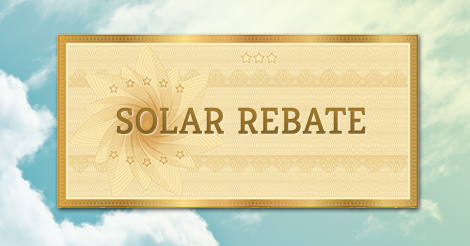What’s the difference between the “Solar Rebate” and the Feed-in Tariff?

I’ve had lots of Facebook comments and emails lately along the lines of “Don’t be fooled into getting solar! The rebate has ended. You only get paid 8c for your solar electricity now!”
This demonstrates 2 common misunderstandings:
#1 The solar rebate and the feed in tariff are two totally different things.
#2 The “solar rebate” is not over.
The “Rebate” is something you are given by the federal government that helps pay for the cost of the solar system. The Feed-in Tariff is what you’re paid by your state government for generating surplus electricity with your solar system. Think of it this way: You get money via the rebate to help you pay for a solar system, and then you get money via the Feed-In Tariff for sending surplus electricity back into the grid (if you have any left to export after powering your own home, that is!)
It does get slightly more complicated than just distinguishing between the “rebate” and the “feed in tariff”, however. There is also a “net” and “gross” feed in tariff.
Gross Feed-In Tariff
You won’t see this around anymore! Gross feed in tariffs essentially meant that you were paid big bucks (In NSW in 2010, you were paid 66c per kWh) for generating solar electricity. You can see why some people dove into this when it first became available – if you had enough money to buy a larger system, you’d be reaping the reward of a $1000 cheque (or more) every quarter from your electricity company.
If you’re ever in NSW and see someone driving a Ferrari, it’s probably because they put a 5kW system on their roof when the 66c gross FiT was on offer.
Net Feed-In Tariff
This is the lamer brother of the gross FiT. Under a net FiT scheme, homeowners are paid roughly 7c – 18c (depending on the state they live in) for every kWh they export to the grid.
Doesn’t sound like a lot, does it? Especially when you pay around 30c per kWh to buy that electricity from the retailer! And you’d be correct. An 7c Net Feed in Tariff isn’t a license to print money like the gross FiT. But it can be a license to save money. The best way to illustrate this is with a real-life example:
I have a 6kW solar system. The federal government reduced the cost of that system by $4500 with the solar rebate. At the time, the state government mandated that I get 8c for the excess electricity I feed into the grid. Despite the 8c being pretty stingy, I still managed to get a $33 quarterly electricity bill. This is because for every kWh I don’t buy (because my solar system has generated it), I’m saving myself 30c. This adds up very quickly, especially since I use most of my electricity during the day!
I explain how this is possible in great detail here.
With that, I hope we can finally put this Rebate/Feed In Tariff confusion to rest, permanently.
And finally, you can get 3 free quotes for solar here.
